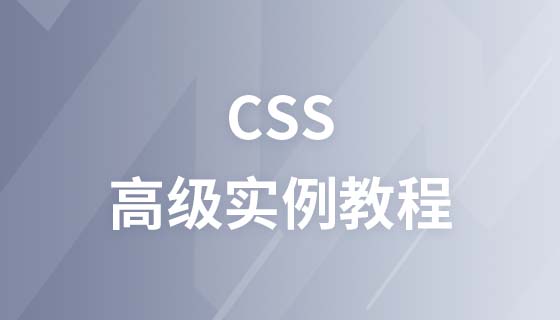使用position: sticky可实现CSS表格固定表头,需配合有滚动的父容器;关键在于设置thead的top值,并确保祖先元素无阻碍sticky的overflow属性,同时注意z-index和列宽一致性,以保证表头粘性生效且与内容对齐。

CSS表格固定表头,这在我日常前端开发中,是那种看似简单却总能让人琢磨一阵子的需求。核心实现思路,说白了,就是把表头从表格内容的滚动流中“剥离”出来,让它能像个倔强的哨兵一样,在内容上下翻滚时,依然坚守岗位。通常,我们借助CSS的
position: sticky
要实现CSS表格的固定表头,最现代且推荐的方法是利用
position: sticky
首先,我们需要一个包含表格的父容器,并给这个容器设置一个固定的高度和
overflow-y: auto
<thead>
<th>
position: sticky
top
HTML 结构示例:
立即学习“前端免费学习笔记(深入)”;
<div class="table-container">
<table>
<thead>
<tr>
<th>列标题 1</th>
<th>列标题 2</th>
<th>列标题 3</th>
<th>列标题 4</th>
<th>列标题 5</th>
</tr>
</thead>
<tbody>
<!-- 假设这里有大量数据行,足以产生滚动 -->
<tr><td>数据1-1</td><td>数据1-2</td><td>数据1-3</td><td>数据1-4</td><td>数据1-5</td></tr>
<tr><td>数据2-1</td><td>数据2-2</td><td>数据2-3</td><td>数据2-4</td><td>数据2-5</td></tr>
<!-- ... 更多行 ... -->
<tr><td>数据N-1</td><td>数据N-2</td><td>数据N-3</td><td>数据N-4</td><td>数据N-5</td></tr>
</tbody>
</table>
</div>CSS 样式:
.table-container {
max-height: 300px; /* 设置一个最大高度,使其内容可以滚动 */
overflow-y: auto; /* 允许垂直滚动 */
border: 1px solid #ccc;
/* 重要的:父容器不能有 overflow: hidden/scroll/auto 且 position: relative/absolute/fixed,
否则 sticky 可能会受影响,这里我们就是利用了它的 overflow-y: auto */
}
table {
width: 100%;
border-collapse: collapse; /* 合并边框,视觉上更整洁 */
}
thead th {
position: sticky; /* 关键属性:使其在滚动时“粘”住 */
top: 0; /* 粘在顶部,距离父容器顶部0px */
background-color: #f8f8f8; /* 背景色,确保表头内容可见 */
z-index: 10; /* 确保表头在滚动内容之上 */
padding: 10px;
text-align: left;
border-bottom: 2px solid #ddd;
}
tbody td {
padding: 10px;
border-bottom: 1px solid #eee;
}
/* 确保表头和内容列宽一致,这通常需要一些手动调整或更复杂的JS/CSS策略 */
/* 简单示例,实际项目中可能需要更精细的控制 */
thead th:nth-child(1), tbody td:nth-child(1) { width: 20%; }
thead th:nth-child(2), tbody td:nth-child(2) { width: 20%; }
/* ...以此类推 */这段代码的核心思想是:当
.table-container
thead th
.table-container
position: sticky
在我实际项目中,遇到过不少次
position: sticky
首先,最常见的问题是父级容器的overflow
position: sticky
overflow: hidden
overflow: scroll
overflow: auto
height
max-height
sticky
sticky
另一个常见的点是top
bottom
left
right
position: sticky
top: 0
再来,z-index
z-index
sticky
z-index
z-index: 10
最后,浏览器兼容性。虽然现在主流浏览器对
position: sticky
display: block
解决这些问题,通常就是回溯检查DOM结构,确保滚动容器设置正确,
top
z-index
outline: 1px solid red
sticky
这才是真正考验前端功力的地方。当表格内容是动态加载的,或者列宽会根据内容自适应时,单纯的
position: sticky
table-layout: auto
一种比较稳妥但稍微复杂的方法是分离表头和表体。具体来说,就是创建两个独立的
<table>
<thead>
<tbody>
核心思路:
HTML结构:
<div class="table-wrapper">
<div class="header-fixed">
<table>
<thead>...</thead>
</table>
</div>
<div class="body-scroll">
<table>
<tbody>...</tbody>
</table>
</div>
</div>CSS处理:
.table-wrapper
position: relative
.header-fixed
position: absolute; top: 0; left: 0; right: 0; z-index: 10;
.body-scroll
max-height
overflow-y: auto
padding-top
<th>
<td>
table-layout: fixed
<th>
<td>
.table-wrapper {
position: relative;
max-height: 400px; /* 整个表格的最大高度 */
overflow: hidden; /* 隐藏可能出现的横向滚动条,或者留给 .body-scroll 处理 */
border: 1px solid #ccc;
}
.header-fixed {
position: absolute;
top: 0;
left: 0;
right: 0;
z-index: 10;
background-color: #f8f8f8;
padding-right: 17px; /* 预留滚动条宽度,避免表头错位 */
/* 这里的padding-right需要根据实际滚动条宽度调整 */
}
.header-fixed table, .body-scroll table {
width: 100%;
border-collapse: collapse;
table-layout: fixed; /* 关键:强制列宽固定 */
}
.header-fixed th, .body-scroll td {
padding: 10px;
text-align: left;
border-bottom: 1px solid #eee;
/* 统一设置列宽,或者通过 nth-child 单独设置 */
width: 20%; /* 示例:假设五列,每列20% */
}
.body-scroll {
max-height: calc(100% - 40px); /* 减去表头高度,假设表头高40px */
overflow-y: auto;
margin-top: 40px; /* 留出表头空间 */
}这种方法的缺点是,如果列宽是完全动态的(比如内容长度不确定,又不想截断),那么你可能需要JavaScript来动态计算表头和表体的列宽并进行同步。这通常是在
window.onload
el-table
antd-table
我个人在使用这种分离表头表体的方法时,如果列宽相对固定,我会倾向于使用
table-layout: fixed
谈到固定表头,除了视觉效果和技术实现,我们还得考虑它对用户体验的深层影响,特别是无障碍性(Accessibility)和性能。毕竟,一个功能再酷炫,如果用起来不方便或者让页面卡顿,那也是失败的。
从无障碍性的角度看,
position: sticky
<table>
<thead>
<tbody>
<th>
<td>
<th>
scope="col"
scope="row"
然而,如果为了实现固定表头而采用了分离表头表体的方案(即两个独立的
<table>
aria-labelledby
aria-describedby
id
headers
至于性能影响,
position: sticky
我曾遇到过一个项目,因为使用了一个老旧的JS库来固定表头,导致在数据量大时,页面滚动起来明显卡顿。排查后发现,这个库在每次滚动事件中都会触发大量的DOM操作和重排(reflow),这是性能杀手。所以,如果可能,优先选择
position: sticky
requestAnimationFrame
总的来说,固定表头在提升用户体验的同时,也需要我们细致考虑其实现方式对无障碍性和性能的潜在影响。选择合适的方案,并进行充分的测试,才能确保最终交付的功能既美观又实用。
以上就是CSS表格固定表头如何实现_CSS表格固定表头方法详解的详细内容,更多请关注php中文网其它相关文章!

每个人都需要一台速度更快、更稳定的 PC。随着时间的推移,垃圾文件、旧注册表数据和不必要的后台进程会占用资源并降低性能。幸运的是,许多工具可以让 Windows 保持平稳运行。




Copyright 2014-2025 https://www.php.cn/ All Rights Reserved | php.cn | 湘ICP备2023035733号